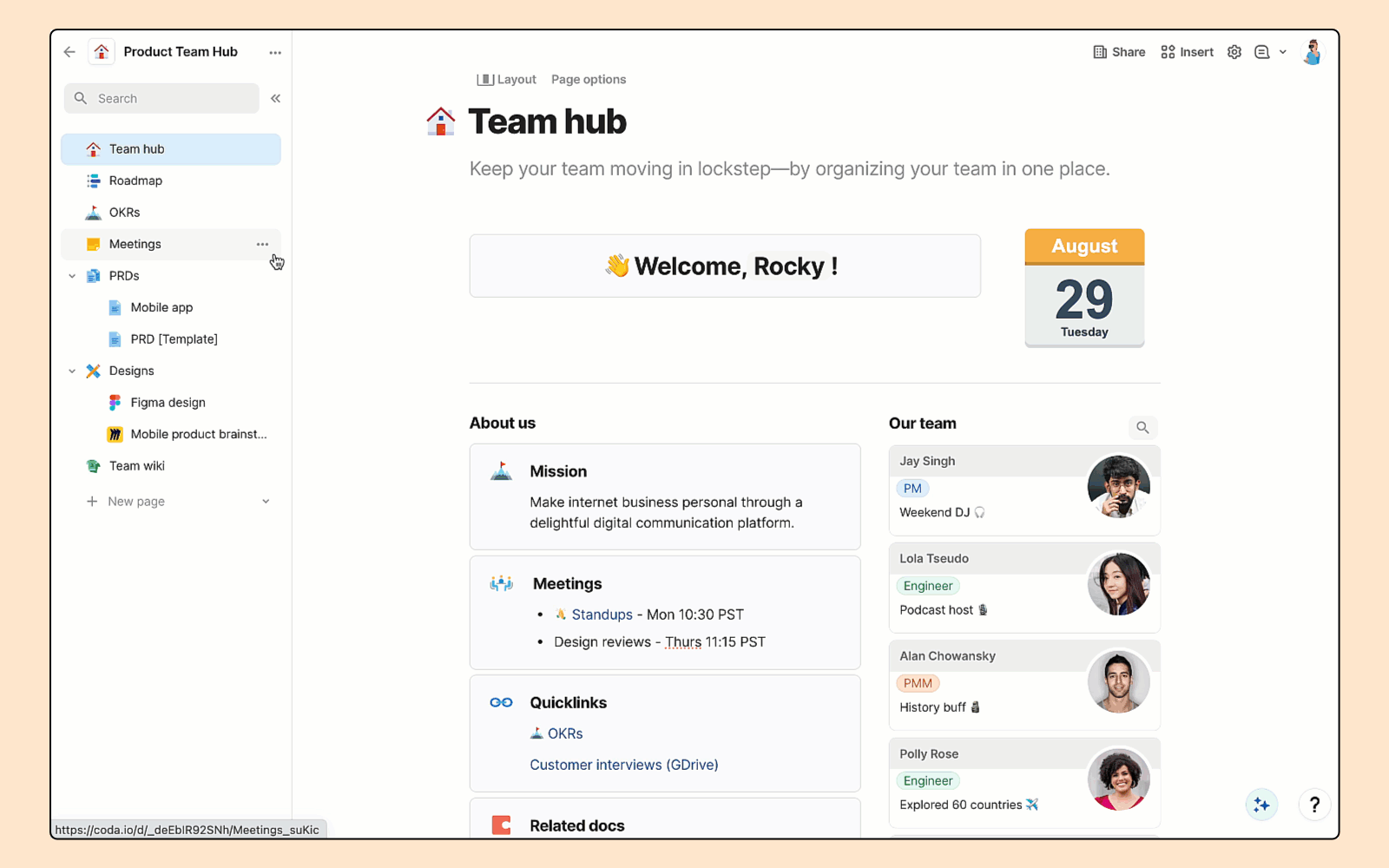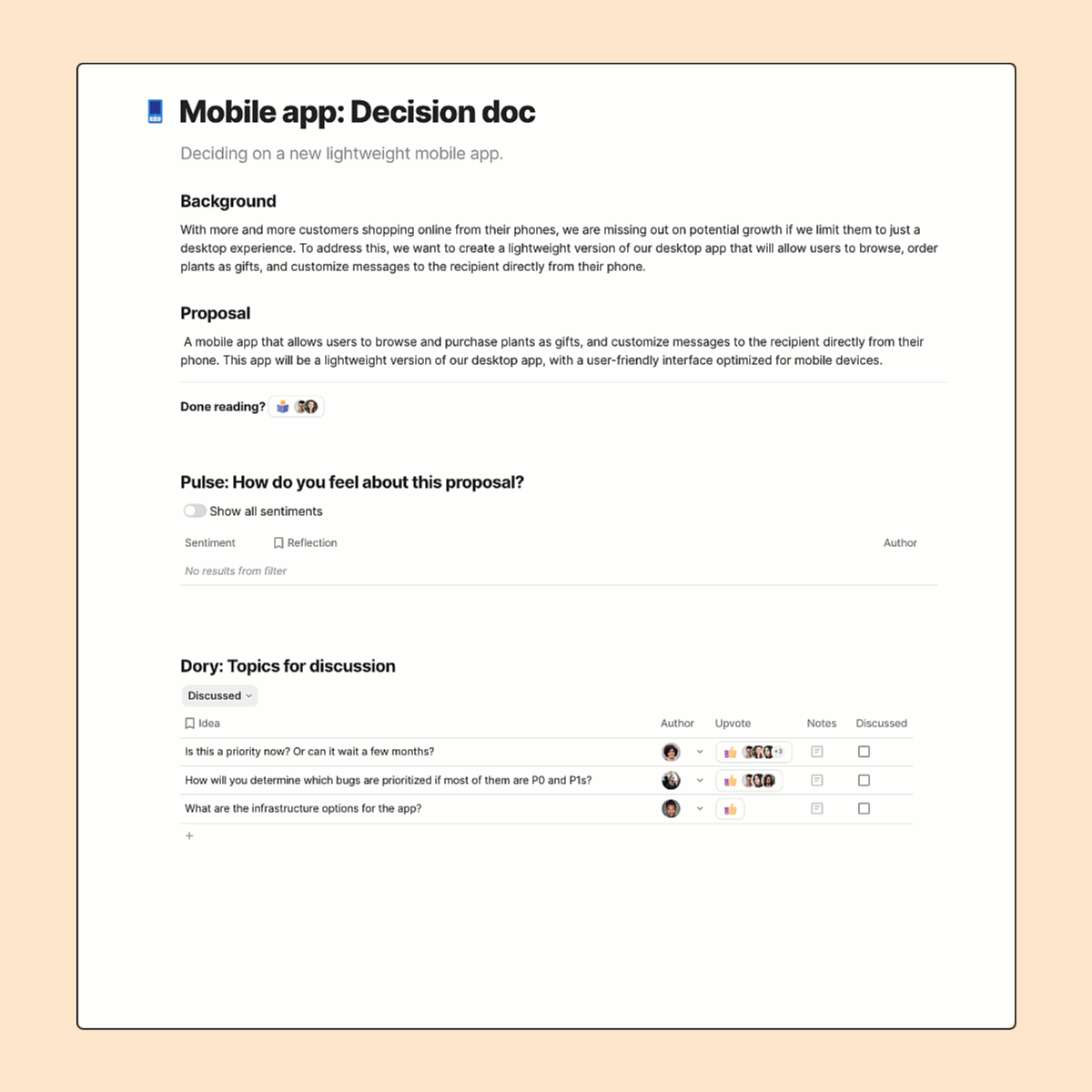
 The Ultimate Coda Handbook for Product Teams
The Ultimate Coda Handbook for Product Teams
What I learned from hundreds of product teams and why they choose Coda.
Three product team rituals & how Coda transforms them.
Ritual #1: consolidate 10 tools into a single source of truth.
Problem: 10 tools to get one project done makes teams feel disorganized and chaotic.
Solution: Team Hubs provide a single source of truth for each team.

Ritual #2: transform decision-making velocity AND quality.
Problem: Decision-making in traditional documents is messy and unstructured.
Solution: Decision Docs in Coda create a clear structure for feedback and decisions.

Ritual #3: unify strategy, goals, and execution.
Problem: Tool sprawl creates siloes for strategy and execution.
Solution: One place for your whole planning process, that leads naturally to execution.

Bonus: : Create leverage by bringing the system together.

Ready to get started?
FAQ
Want to print your doc?
This is not the way.
This is not the way.

Try clicking the ⋯ next to your doc name or using a keyboard shortcut (
CtrlP
) instead.